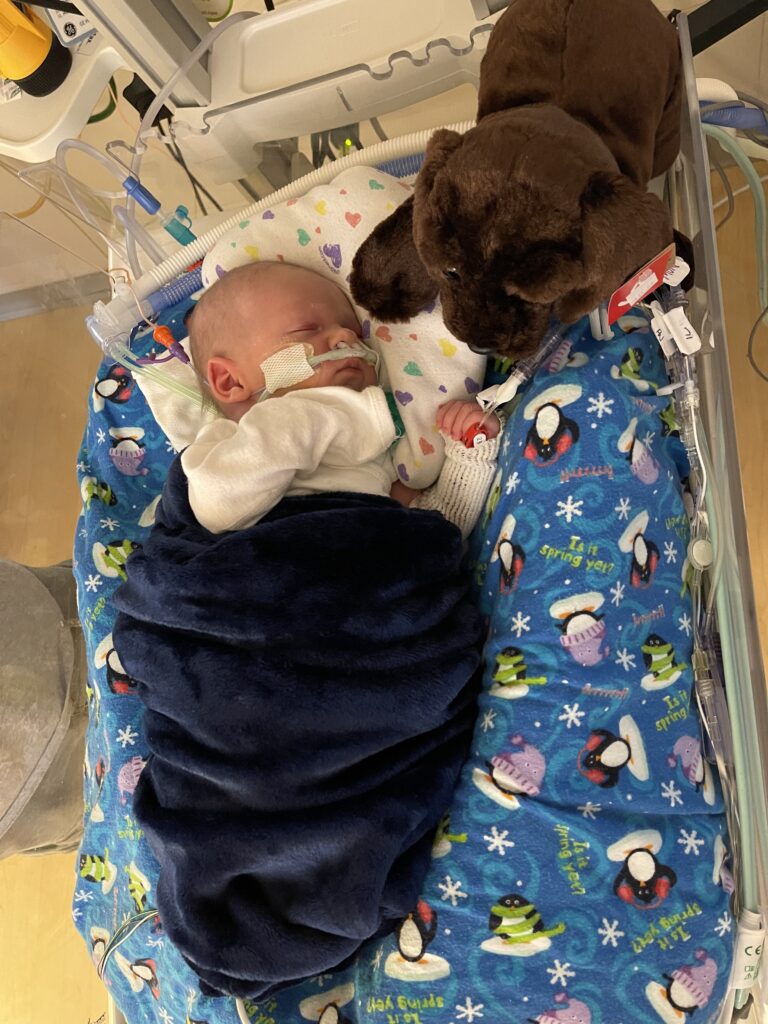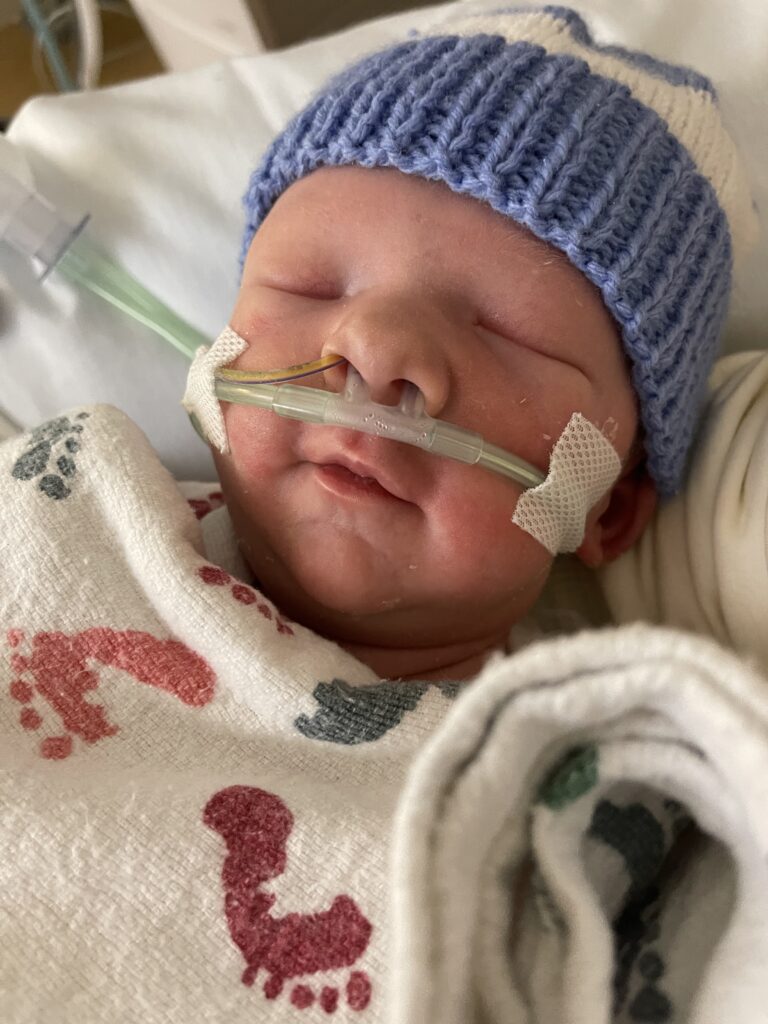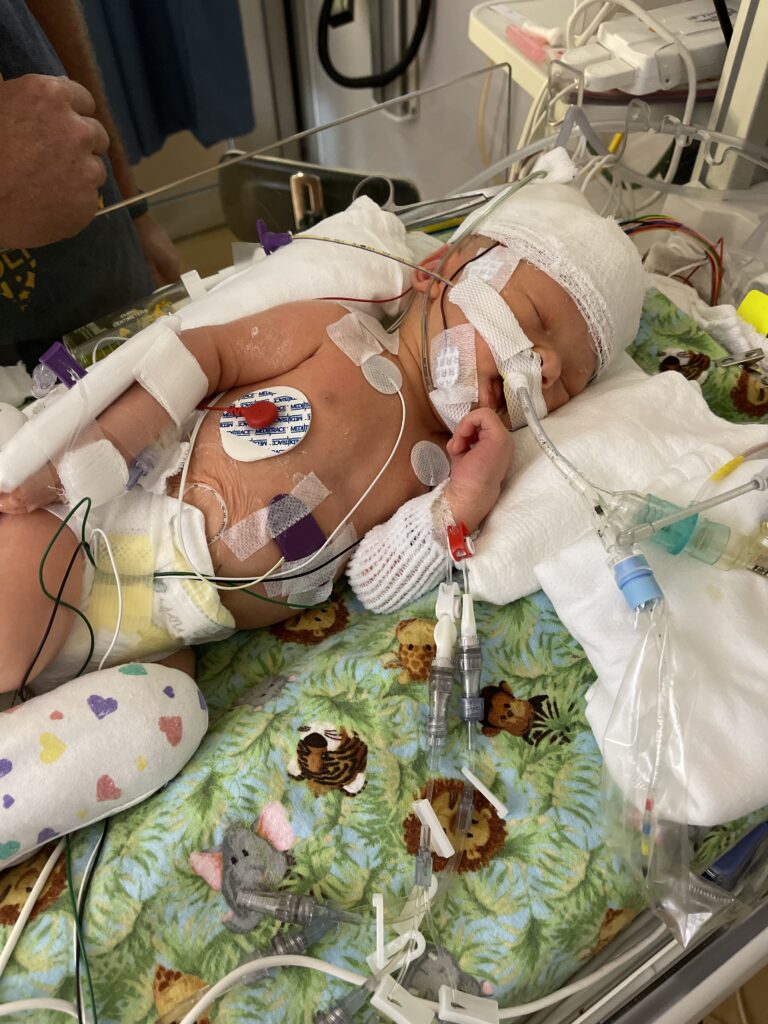

Emersyn was born on August 5, 2021, after an uneventful pregnancy filled with constant kicks and movement. Labor was short—just two hours from start to finish—and delivery went smoothly. Everything seemed perfectly normal at first. When I finally got to hold him, I noticed his eyes rolling slightly and a yellowish tint to his skin, but I was told it was normal for newborns.
A little later, Emersyn went to be circumcised. When he returned, the nurses mentioned they thought he might have aspirated during the procedure, so they wanted to keep an eye on him for a few hours. Everything seemed okay, and by around 11 a.m., we were discharged to go home.
Once home, however, things didn’t feel right. Emersyn wasn’t taking his bottles, and he kept curling his legs up as if he were constipated. By 5 p.m., I knew something was wrong—he still hadn’t had a wet diaper, and his color just didn’t look right. We rushed back to the hospital.

In triage, his vitals looked fine, but soon after we were taken to a trauma room, everything changed. The nurses hooked him up to monitors and stepped out. Within moments, alarms started blaring. I watched as people rushed into the room—Emersyn’s oxygen had dropped to 50%, and he was seizing in my lap.
The NICU team was called down immediately. They performed countless tests—blood work, spinal taps, and more—but couldn’t find clear answers. The EEG confirmed he was having seizures. The attending physician advised that Emersyn needed to be transferred to a larger hospital equipped to handle complex cases.
While we waited for a bed to open at CHOP, I started searching for other options and found that Johns Hopkins Children’s Center had space available. That same night, we were transferred by ambulance.
At Johns Hopkins, doctors continued running tests and trying to control his seizures. On the third day, we were told to prepare for the worst—that we might never bring him home. Our world stopped in that moment.
Genetics soon became involved and decided to run a panel to look for possible metabolic or genetic causes. While waiting for results, one of the doctors suggested starting Emersyn on Vitamin B6 (pyridoxine). Almost immediately, they saw a dramatic improvement. His seizures began to subside, and they were able to start weaning down his medications. For the first time, we had hope.
A few days later—on my grandmother’s birthday—we received the results: Emersyn had Pyridoxine-Dependent Epilepsy (PDE), a rare genetic condition that causes seizures due to the body’s inability to properly process Vitamin B6.
After weeks in the NICU, Emersyn was finally strong enough to come home. We had been through fear, heartbreak, and uncertainty—but also witnessed strength, resilience, and hope.


 Donate
Donate